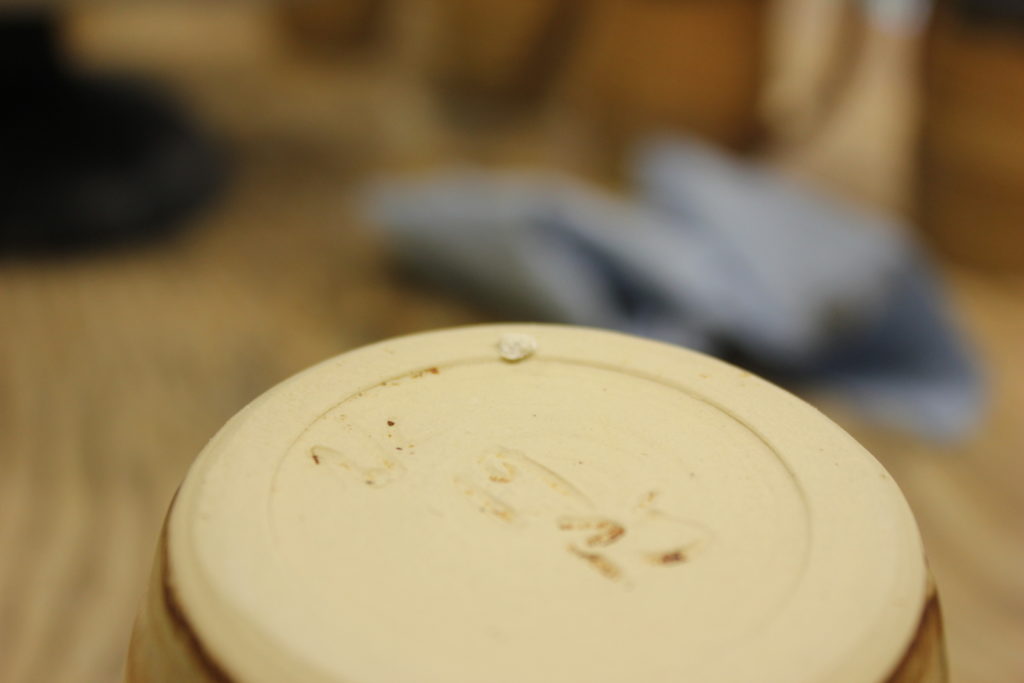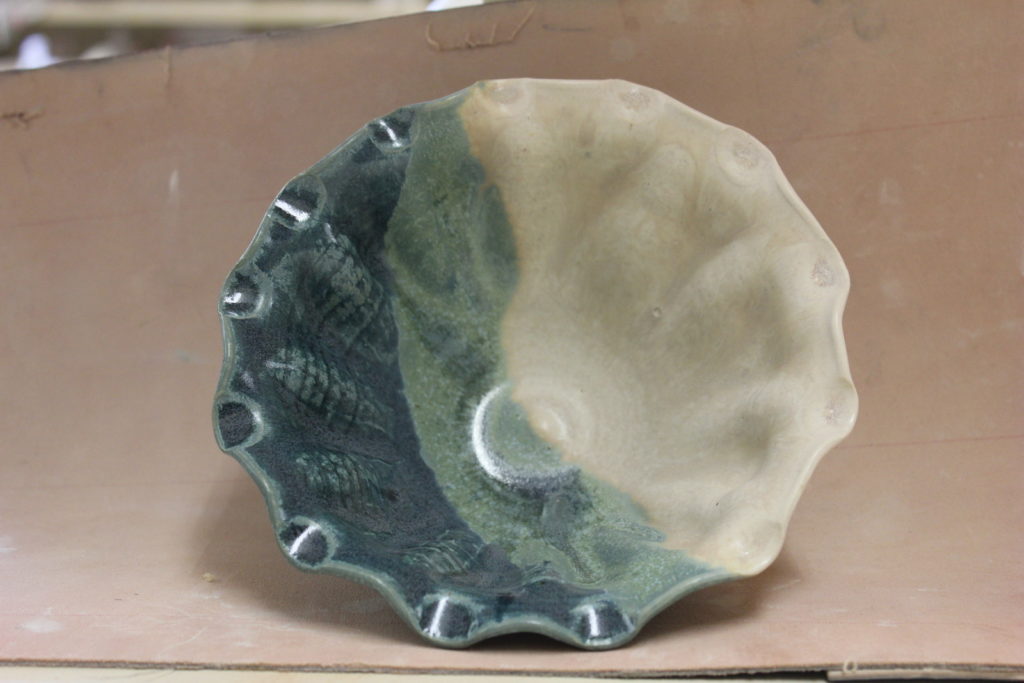
For a long time I have never used kiln wash on my shelves. I did not think that it was necessary because I wax the bottom of my pieces and I use glaze that does not run. I have always seen kiln wash as being just for the protection of kiln shelves from glaze overruns. It was not until I did some reading that I discovered the second use of kiln wash.
What is this second use? Well, it is to allow the pieces to move smoothly as they being fired. As the kiln heats up and cools down, a piece will grow and shrink as it changes temperature. Because the clay and the kiln shelf are different materials, they will have different coefficients of thermal expansion. What that means is that they get bigger at different rates. This can lead to stress on a piece that will cause it to chip where those differences become too great for the pot to accommodate.
Where the kiln wash comes into play is that it will allow the piece to move more freely with regards to the shelf, preventing the chipping on the bottom of the piece. when I first got my kiln, I notices this chipping and designed around it, or would make extra pieces to counter the risk of chipping.
So, what is kiln wash? It is essentially a refractory that resists vitrification. It doesn’t “cook” until a higher temperature than the wares that sit on top of it. I bought a pre-made kiln wash for about six dollars, and I can say with confidence that even without glaze overruns that it is a good investment. The kiln wash chip protection will let me return to some ideas that I ruled out in the past.




